Mr.
October 21, 2023555
555
555
555
555
555
555
555
555
555
555
555
555
555
555
555
555
555
555
555
555
555
555
555
555
QTIFfT6g
-1 OR 2+375-375-1=0+0+0+1 --
-1 OR 2+796-796-1=0+0+0+1
-1' OR 2+239-239-1=0+0+0+1 --
-1' OR 2+835-835-1=0+0+0+1 or 'Sygybnje'='
-1" OR 2+307-307-1=0+0+0+1 --
if(now()=sysdate(),sleep(15),0)
0'XOR(if(now()=sysdate(),sleep(15),0))XOR'Z
0"XOR(if(now()=sysdate(),sleep(15),0))XOR"Z
(select(0)from(select(sleep(15)))v)/*'+(select(0)from(select(sleep(15)))v)+'"+(select(0)from(select(sleep(15)))v)+"*/
-1; waitfor delay '0:0:15' --
-1); waitfor delay '0:0:15' --
1 waitfor delay '0:0:15' --
xyTLbeTu'; waitfor delay '0:0:15' --
-5 OR 369=(SELECT 369 FROM PG_SLEEP(15))--
-5) OR 490=(SELECT 490 FROM PG_SLEEP(15))--
-1)) OR 838=(SELECT 838 FROM PG_SLEEP(15))--
ZKpowiA1' OR 158=(SELECT 158 FROM PG_SLEEP(15))--
qta2wDwu') OR 657=(SELECT 657 FROM PG_SLEEP(15))--
I7QH3txo')) OR 175=(SELECT 175 FROM PG_SLEEP(15))--
555*DBMS_PIPE.RECEIVE_MESSAGE(CHR(99)||CHR(99)||CHR(99),15)
555'||DBMS_PIPE.RECEIVE_MESSAGE(CHR(98)||CHR(98)||CHR(98),15)||'
1'"
1�À§À¢%2527%2522
@@ZffI9
555
555
555
555
555
555
555
555
555
555
555
555
555
555
555
555
555
555
555
555
555
555
555
555
555
555
555
555
555
555
555
555
555
555
555
555
555
555
555
555
555
555
555
555
555
555
555
555
555
555
555
555
555
555
555
555
555
555
555
555
555
555
555
555
555
555
555
555
555
555
555
555
555
555
555
555
555
555
555
555
555
555
555
555
555
555
555
555
555
555
555
555
555
555
555
555
555
555
555
555
555
555
555
555
555
555
555
555
555
555
555
555
555
555
555
555
555
555
555
555
555
DOGsreFz
-1 OR 2+203-203-1=0+0+0+1 --
-1 OR 2+39-39-1=0+0+0+1
-1' OR 2+411-411-1=0+0+0+1 --
-1' OR 2+785-785-1=0+0+0+1 or 'U1108GOK'='
-1" OR 2+178-178-1=0+0+0+1 --
if(now()=sysdate(),sleep(15),0)
0'XOR(if(now()=sysdate(),sleep(15),0))XOR'Z
0"XOR(if(now()=sysdate(),sleep(15),0))XOR"Z
(select(0)from(select(sleep(15)))v)/*'+(select(0)from(select(sleep(15)))v)+'"+(select(0)from(select(sleep(15)))v)+"*/
-1; waitfor delay '0:0:15' --
-1); waitfor delay '0:0:15' --
1 waitfor delay '0:0:15' --
ItfX7VkC'; waitfor delay '0:0:15' --
-5 OR 396=(SELECT 396 FROM PG_SLEEP(15))--
-5) OR 688=(SELECT 688 FROM PG_SLEEP(15))--
-1)) OR 159=(SELECT 159 FROM PG_SLEEP(15))--
KBWVcR0O' OR 344=(SELECT 344 FROM PG_SLEEP(15))--
HX0EazUo') OR 874=(SELECT 874 FROM PG_SLEEP(15))--
lnzAOcdc')) OR 424=(SELECT 424 FROM PG_SLEEP(15))--
555*DBMS_PIPE.RECEIVE_MESSAGE(CHR(99)||CHR(99)||CHR(99),15)
555'||DBMS_PIPE.RECEIVE_MESSAGE(CHR(98)||CHR(98)||CHR(98),15)||'
1'"
1�À§À¢%2527%2522
@@gnQ49
555
555
555
555
555
555
555
555
555
555
555
555
555
555
555
555
555
555
555
555
555
555
555
555
555
555
555
555
555
555
555
555
555
555
555
555
555
555
555
555
555
555
555
555
555
555
555
555
555
555
555
555
555
555
555
555
555
555
555
555
555
555
555
555
555
555
555
555
555
555
555
555
555
555
555
555
555
555
555
555
555
555
555
555
555
555
555
555
555
555
555
555
555
555
555
555
555
uyo
a
a
asd

In any typical warehouse, picking and packing are no doubt the most essential activity, and it plays a very great role in customer satisfaction as well as in analyzing the overall supply chain performance. Pick and pack warehousing is part of the entire management system of a supply chain commonly used in product distributions There are various picking and packing plans and one of the best and recommended is the eco-friendly green warehousing plan. It costs nothing more than regular shipping methods but it has more healthy and safe picking and packing solutions. For one to realize a greener and eco-friendly pick & pack warehousing strategy, they should ensure that they:

Nowadays, you’d be hard-pressed to find too many people that don’t
own a smartphone of some kind: almost everyone seems to be carrying an
iPhone, Android or Windows phone. And, on their phone, they’re sure to
have countless apps, from social media to banking, games to emails. And
retail companies are reaping the rewards, too, with dozens of the
country’s biggest names like Asos and John Lewis each with their own app
offering a new way to browse products and make purchases. This article
takes a look at how mobile is one of the best platforms for commerce,
and how you can cash in on it.

Choosing to try new approaches to reaching new customers is a big step
to take: it often involves a great deal of research into that approach
to find out its strengths and weaknesses, to see the true results that
it can give. When it comes to mailing campaigns, that’s no different. A
mailing campaign is a method that quite literally puts your company and
the services it can offer on the doorstep of a potential customer, so
its little wonder that time after time, London businesses see the value
of these types of campaigns. In this post, we take a look at how a
fulfilment company can help you grow your business using a campaign of
this type, and unpack what a mailing campaign entails.

Any good fulfilment company
will do their utmost when transferring goods from one customer to
another. They are aware that first impressions count, and that no matter
how excellent the product is, the memory of how it was delivered will
remain in the psyche of the client long after the product has perished
or died.

As we all know, outsourcing the warehousing and distribution
end of your business can yield fantastic results for your business.
Finding professional logistics services that can take your supply chain
to the next level will only serve to improve your customer service,
keeping your buyers loyal in a marketplace that is becoming increasingly
competitive. In this article, we take a look at some of the dangers
that online businesses large and small face, and the solutions that can
be put into place to combat them.

Providing efficient distribution can often be the deciding factor
between customers that return and those that don’t. Getting fulfilment
right every time is a must for online selling. Follow our golden rules
to online trading and you’ll be making sure those customers buy from you
again and again.

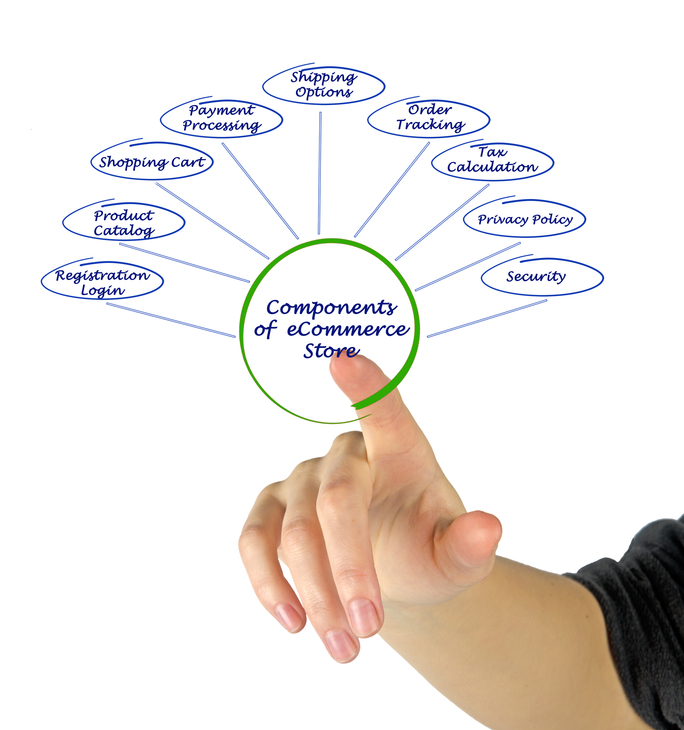
Ecommerce is a very competitive industry, and nine times out of ten a
new customer will pick the least expensive provider of a good or
service, regardless of any other factors. Order fulfilment, and specifically pick and pack
can be responsible for a lot of your overhead, and making efficiency
advances there could help your overall profitability quite a bit.

Every Fulfilment Warehouse
feels the pressure to improve efficiency and service, and to streamline
operations as much as possible. Often when it is time to expand
operations, managers begin to consider bringing in a LMS to help them
keep track of the performance and statistics of larger numbers of
warehouse workers without adding more managers.
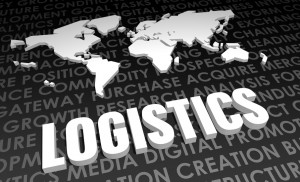
Logistics management refers to the process of planning, executing,
controlling efficient, effectual flow and warehousing of goods, services
and associated information from the place of origin to the place of
consumption with an aim of meeting the customer needs. When you let
another person, specialised in logistics offer these services, it is
termed outsourcing logistics.
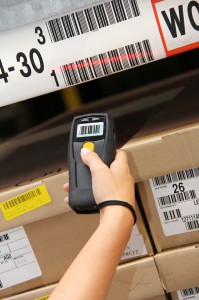
Omnichannel sales demand an efficient order fulfilment process, and your pick and pack operations
are one of the most important parts to optimise. Making the jump to an
automated pick and pack process can increase the volume each picker can
handle dramatically. No automated system can yet replace all of your
pick and pack workers, but the best can make them much more effective.

The ability to provide an early delivery date is one of the biggest
factors in providing customer satisfaction. In the most recent UPS Pulse
of the Online Shopper survey, fully half of online consumers have
cancelled an order at the ‘shopping cart’ stage if there were no timely
delivery options available or if no solid delivery date was available on
the website. Delivery time is central a factor of customer
satisfaction, and had become the most important ‘deal breaker’ for
online sales. Worse still, 27% of those polled said that a late delivery
was likely to stop them from using that retailer again.

Ecommerce’s popularity and market share continues to grow, and consumers
all over the world have gained an unprecedented degree of comfort with
online and mobile shopping. As they become more willing to explore
alternative online retail options, consumers are turning to ecommerce subscription services (and related automatic renewing services) in greater numbers than ever before.
It is easy to see why – the convenience is huge. Every month, perhaps
every week your staples turn up at your door. For me it’s a bag of
Columbian coffee, a bottle of milk a loaf of bread and a half dozen
eggs. In an earlier generation the grocer’s boy would have delivered the
same riding a bicycle. Another service sends me a different bottle of
wine every month. Perhaps the grocer’s boy wouldn’t have been trusted
with that.
And of course, just about anything that is convenient for shoppers
translates into increased sales for the merchants (online or otherwise)
who support it. If properly managed, ecommerce subscriptions can be more
efficient and less costly from an order fulfilment perspective because
they are regular, repeating events. A good fulfilment partner should be
able to arrange discounted service for regular, reliable ecommerce
subscriptions in high enough volume. It costs them less, so you both
make more money.
The following are a few ways to make ecommerce subscriptions even more effective for you both.

Businesses all over the world are increasingly benefiting from the fantastic services that the courier logistics industry has to offer.
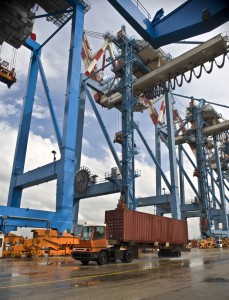
All too many companies select a fulfilment partner without first
ascertaining their abilities with reverse logistics. Reverse logistics
is that part of shipping and logistics services dealing
with the movement of goods back from consumers, usually as a result of
product returns. Not every return is a complete write-off of course, and
a good shipping and logistics service provider should be able to
process returns in such a way as to recapture the maximum value from
them.
The goal of most reverse logistics procedures is to get the returned
goods back into the normal supply stream as quickly as possible, usually
by verifying their good condition and repackaging them at the
fulfilment house so they can be delivered again quickly and
inexpensively.
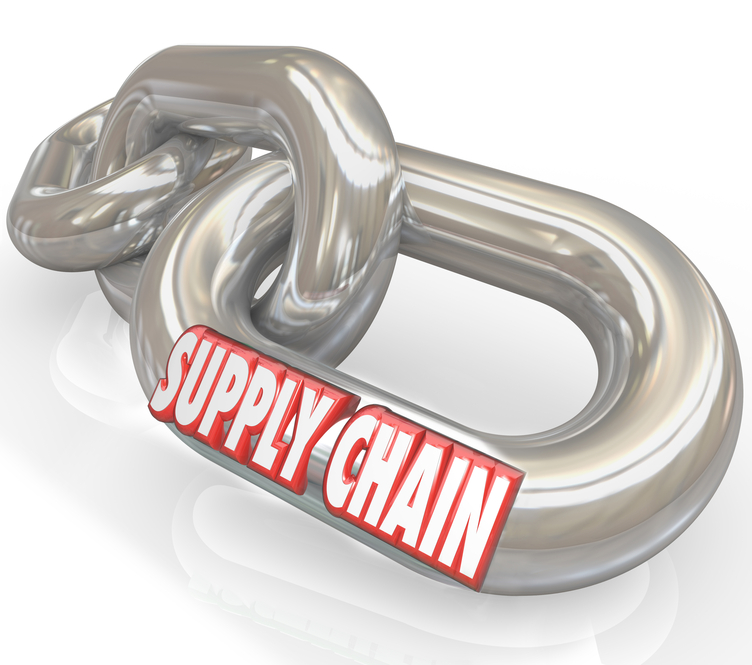
Supply chain management
applications help you in creating plans and developing strategies for
your business in a more efficient manner. It enables you to assess your
manufacturing capabilities with well thought out logistics by planning
and carrying out the necessary tasks. Profit generation largely relies
on these two aspects because by managing these properly you will
dramatically increase the efficiency. There are a number of links in the
chain in business therefore by missing or not staying on top of one
part this may cause an unnecessary waste of resources.
Supply chain management is a tried and tested method but Enterprise Resource Planning (ERP) has
aided in reducing the inaccuracies and improved the performance of the
supply chain. ERP and Supply Chain Management is a way of planning all
the resources in the business enterprise effectively. The organisations
determine which operating systems and operating performance will assist
them in managing the business operations and meet the objectives of the
business. ERP and SCM also includes the trading partners of the
organisation which are the customers and the suppliers. It is for the
companies who are looking to generate rapid improvement in their
operations. The assessment of ERP and SCM depends a great deal on the
size of the operations and takes about three to four days. The
organisation’s intent, implementation and effectiveness of the existing
operations are assessed based on an ERP model.


Many fulfilment houses now provide admail services, sometimes known as direct mail services or
advertising mail services. That is, essentially, arranging delivery of
adverts or marketing material to existing or potential customers,
usually through the post. All too often dismissed as ‘junk mail’, direct
mail services are one of the most effective and efficient ways to
communicate with your market. Direct mail services are the most common
form of direct marketing, used heavily by businesses small and large,
non-profit organisations and charities all over the world.
As email and electronic communications handle more and more of our
day to day interpersonal communications, the little mail we still get
grows in importance. While we once separated all mail into ‘bills’ ‘junk
mail’ and ‘real mail’, now we see incoming mail as consisting of simply
‘bills’ and ‘not bills’. In fact, the delivery of direct mail
advertising is becoming a large part of the postal service’s business in
many countries, especially the UK and US. As fewer private letters are
sent, post offices around the world are becoming much more welcoming to
direct mail services, and eager to do more business with them.
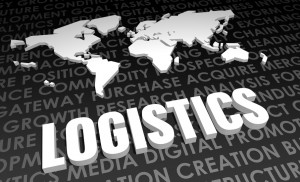
The Contract Logistics sector
has seen a lot of merger and acquisition activity in the past few
quarters. What information we have from large 3PLs and contract
logistics players indicates that this is likely to continue for at least
the immediate future, and be a major factor in the profitability, or
lack thereof, in the sector as a whole.
Large scale mergers and acquisitions were common before the economic
recession that is just beginning to pass. This time last year, many
would have speculated that as investment money becomes more fluid again,
large scale takeover bids would once again be the norm. However, in the
aftermath of UPS’s failed takeover bid for TNT, consolidation is likely
to continue on a more selective, careful fashion. Smaller organisations
are more likely to be targeted for takeover or merger, especially those
operating in niche industries or peculiar geographic regions.
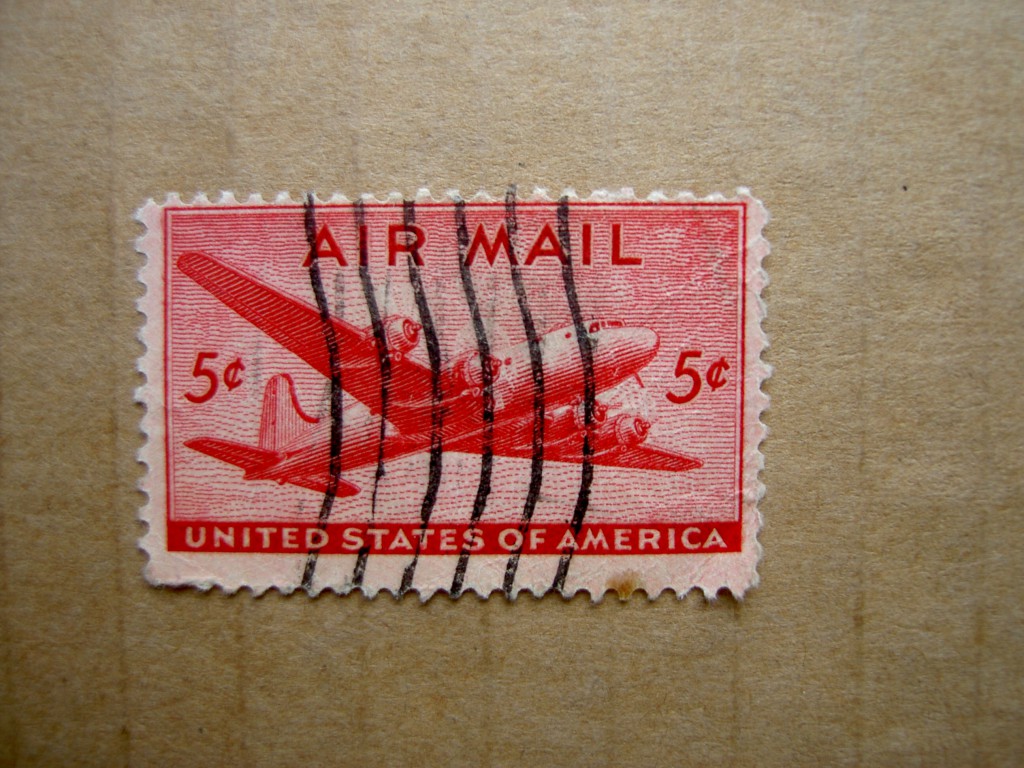
If you’re a company who needs to reach clients through mailing campaigns, or distributing products then the most feasible way of doing this is by having a mailing house provider. This saves your time, your money and other vital resources. The question is though, what do you look for in a mailing house provider and what are the benefits?

Many manufacturers have taken to outsourcing their packaging tasks these
days, as they find it more cost effective, and it takes away the
headache of dealing with all the issues associated with different
designs, packaging solutions and planning. So how do you know when to
start looking for a packaging solution outside of your own warehouse?
There are many “red flags†that should warn you that you really need to
start looking to outsource, and just a few of them are mentioned below.
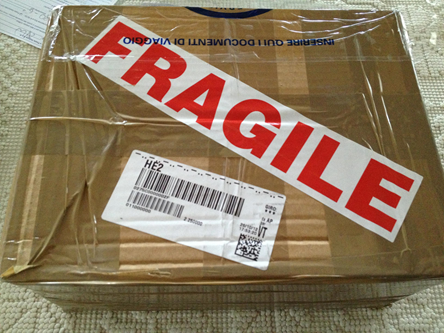

Even top-quality cloud-based warehouse management systems have a
measurable lag time when transmitting instructions to your sortation
system. When a warehouse has to act on tens of thousands of tiny
decisions every day, and depend on split second timing for their
efficiency edge, even a small delay can make the whole system somewhat
ineffective.
Most experts agree that there is a definite need for warehouse control systems
(WCSs) and warehouse management systems (WMSs). The fulfillment
industry has experienced a great deal of change recently, and expects to
see as much or more in the years to come. The ecommerce and omni
channel distribution movements have made the supply chain substantially
more complicated, and the IT industry has responded by providing
solutions that can act on these new levels. Simple ‘pick pack post’ fulfilment would not be simple at all without these modern control and management systems.
Still, they are not without their problems. Many of these have more to
do with the way these systems are implemented than with the systems
themselves. Some experts feel that too many distribution centre or
warehouse managers have adopted cloud solutions too quickly, rather than
choosing a more traditional warehouse management system, installed on
their own, local servers.
At the moment, most users of cloud-bases WMSs are smaller warehouses
with basic equipment, often little more than lift trucks, handheld
barcode scanners or RFID devices.
Cloud-based solutions are appealing because of their lower up-front
costs. Upgrades and maintenance are also avoided, at least as separate
expenses, as that is all part of the SaaS package.


One of the biggest expenditures for those who retail online is their
shipping and fulfilment. There are many costs involved before the
product reaches the customer and every part of the procedure needs to be
done well to ensure a successful transaction; crucial for success. Bad
fulfilment, poor order processing and delayed deliveries can make your
customers extremely unhappy and eliminate the chance of more business
and good word of mouth. So, ensuring that you get your items delivered
in a speedy fashion needs to be the top priority in a marketing
strategy. The major online retailers such as Amazon and eBay have their order processing and fulfilment needs down to a fine art and this greatly contributes to their huge popularity and massive success.

By streamlining your company’s operations through a pick and pack despatch partner,
this can greatly improve your fulfilment procedures as well as saving a
significant amount of money in import and export fees, and eliminate
security headaches. Order fulfilment can be a real headache, a drain on
time resources and a crucial thing to get absolutely right; by hiring
someone to do this for you this can lead to effective gains in consumer
satisfaction which, when it boils down to it, is how a company stays
afloat in the current climate.

‘Order processing’
is actually a very broad term, used to refer to all of the processes
followed to fulfil any order placed by a consumer for a good or service,
including picking, packing, and transporting the package to a shipper
for delivery. It is the heart of order fulfilment, and usually takes
place in a distribution centre.
Order
processing starts when an order is taken from a customer. More and
more, these orders are taken online, but telephone and written orders
are still a part of the process. Order processing ends when the customer
actually receives the products, and accepted that the delivery is
complete, accurate and satisfactory. As you might guess, the complicated
parts are between those points, and can vary dramatically between
different distribution centres and between different goods or services.
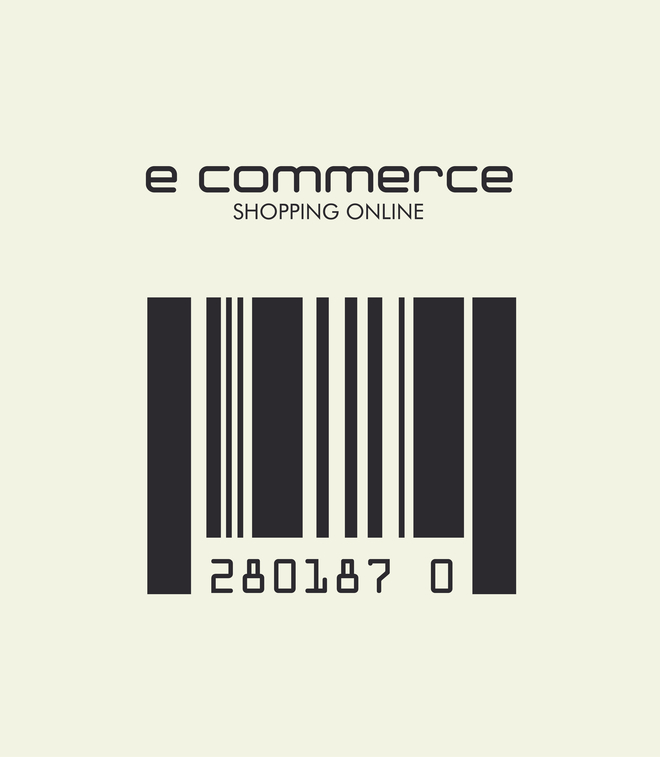
It seems everyone has a smartphone or a tablet these days, and they
are being used for more and more of our daily computing tasks.
M-commerce sales have more or less doubled since this time last year,
and makes up a substantial portion of total online sales. The experts
all agree that e-commerce over mobile devices will continue to take up a
larger and larger share of the market, though there is spirited
disagreement about the predicted rates of growth.
This means that many of your website visitors are already viewing it
on a three to seven inch screen, whether your site can recognise and
adapt to this fact or not. If you aren’t providing a good user
experience for such a large segment of your visitors, is it surprising
that they are turning to competitors who are?

Any merchant, whether e-commerce, catalogue, or hybrid brink-and-mortar, will tell you that order fulfilment is vital to your customer experience,
and much more important to the all-important return business than front
end design, search engine optimisation or even advertising. The prompt
delivery of a customer’s order, as well as the accuracy, condition and
appearance of the order, is what customers will remember about an
internet purchase, long after they’ve forgotten everything else. The quality of order fulfilment is therefore more important to the development of your brand than almost anything else.
In the same way, your pick and pack operations are the beating heart
of your fulfilment processes. If you aren’t quite ready to turn your pick and pack or order fulfilment processes over to a specialist third party logistics partner,
consider these four strategies to make your pick and pack processes all
that they can be, improving the accuracy, efficiency, and speed of your
entire order fulfilment operation.

Not long ago, Branding Brand made its worldwide Mobile Commerce Index report for April 2014 public, and the results were bullish on m-commerce. The report consolidated global data on consumer activity that came to ecommerce retailers through smartphones and similar small mobile devices, and gave us some useful comparisons of the performance of smartphone-optimised ecommerce sites between April 2013 and April 2014.
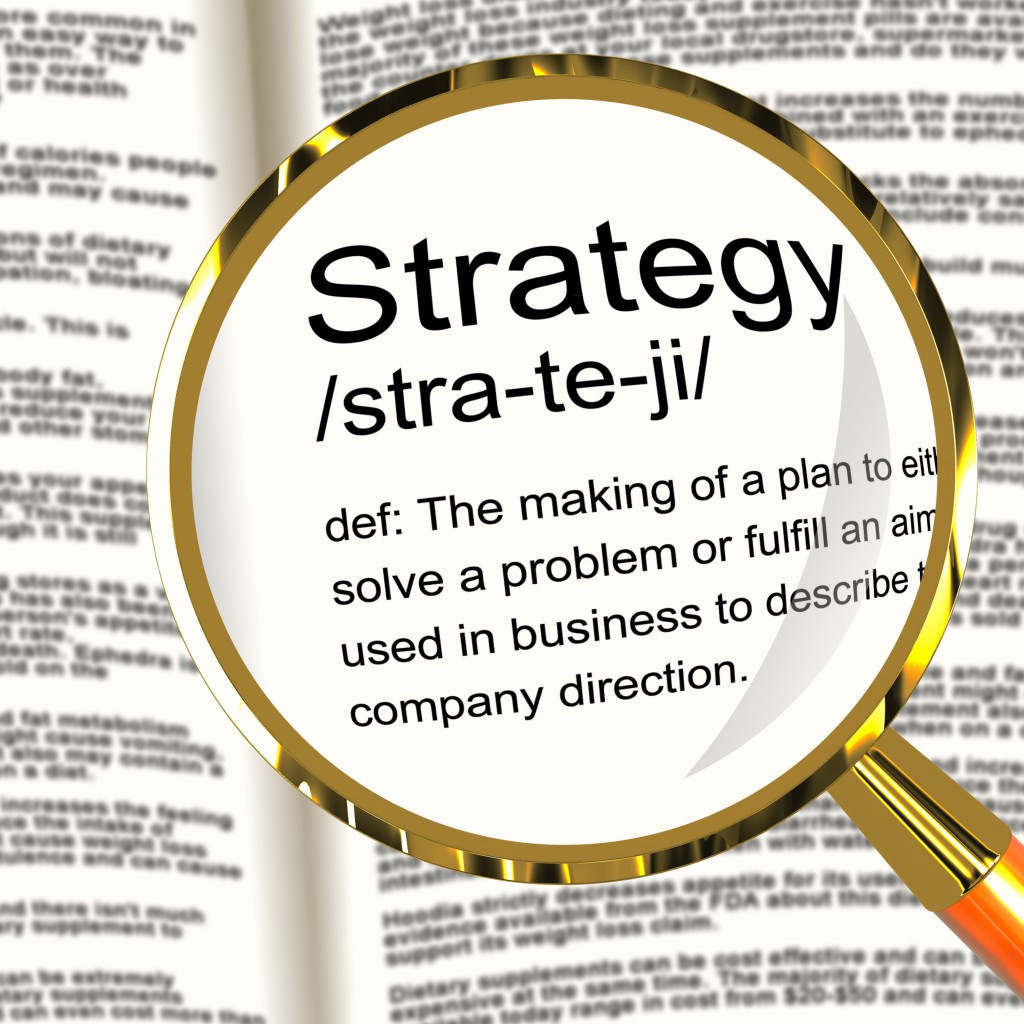
Integrated Logistics Support (ILS)
is a technical process in which support and logistics considerations
are integrated within the design life cycle of a product or system. The
overall aim is a cost-effective and durable system that performs to its
maximum capabilities.
A lean, functional system that requires minimal support thereby
increasing one’s return on investment (ROI): functional, reliable and
usable whilst conforming to standards of best practice.
ILS is popular with product support, e.g. distribution and customer service systems.

As we near the midpoint of the decade, the new consumer landscape of the ‘teens’ is now well established. Two substantial changes from the 2000s have already become clear.

Though many experts predicted that cloud computing would be the development that brought modern supply chain execution software solutions (SCEs) such as warehouse management systems (WMSs) within the reach of the small or medium warehouses that could not afford the initial adoption costs for these products, they have been very slow to arrive, and even slower to be adopted. Cloud based WMS options have been available for years, but have accounted for only a tiny fraction of the UK WMS market in 2013. To put that in perspective, cloud based CRM software accounts for nearly half of that market now, and the supply chain management sector looked at a s a whole is more than 20% cloud based.

There are many benefits to outsourcing your pick and pack services, but none greater than the savings on the resources of time and money. You will save much time by no longer attempting to pack and fulfil all orders alone, and you’ll save money by finding a provider who will over special rates such as loyalty schemes or discounts. A more secondary factor, although still important is the customer satisfaction you can gain without doing any of the work to achieve this – by finding a supplier with a reputable company and whose active years and client list are extensive, you are guaranteed a speedy and successful service which in turn means that your customer will receive their goods at a quick pace, every time.
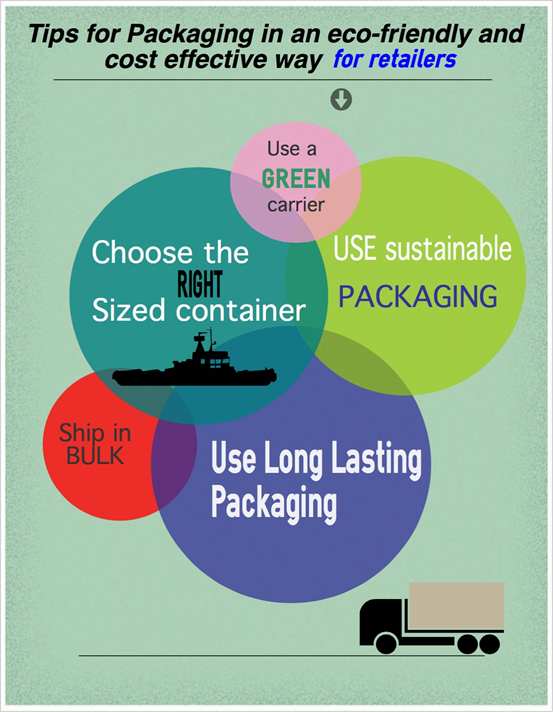

Fairway has strengthened its Medical Fulfilment offering by extending
its existing MHRA Wholesale Dealer’s Licence to also include Veterinary
Products. This addition was to meet the needs of a specific customer and
involved a detailed external audit by the MHRA of Fairway’s security,
processes, cleanliness and staff training. This demonstrates the
company’s commitment to continue to expand its service offering to
customers.

Ecommerce retailers succeed or fail based on their web presence. Your
entire business rides on these bits of code, so shouldn’t you make sure
you’re using every trick in the book to its best potential? We’ve
included a few words of advice on some of the things even
well-established website can often improve on. After all, the more
sales you make, the more fulfilment business we do.
It is easy to fall into the mode of thinking that your core values
need to be quality and service, and that your website need only be
functional and efficient. This is only partially true, though. Letting
quality or service slide will end an ecommerce concern in a hurry, no
doubt about it, but a lacklustre or an unpleasant website can doom an
otherwise excellent business to obscurity and failure just as quickly.
Your online customers will probably never meet you or speak to you,
so you have to put your charisma and passion for your products into the
website itself.
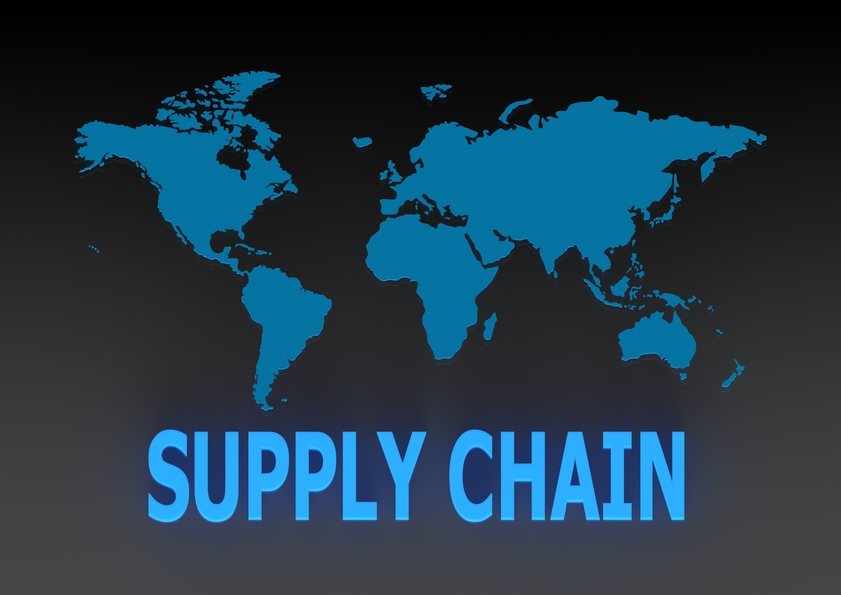
Supply chain management is complicated for a few different reasons, but one of the most important is the relatively high rate of turnover within it. The responsibility of managing a supply chain is more likely to be passed between different individuals in the same organisation, or increasingly made the responsibility of a 3PL, than many other business functions. This can mean that a new manager is handed the reins with little understanding of his or her predecessor’s strategy or aims.

Many ecommerce retailers understand the concept of inventory carrying cost (ICC) in the abstract, but have trouble applying it operationally. Many e-tailers do not give proper weight to the costs of carrying inventory, and therefore miss a lot of essential inefficiencies in their operations. I want to highlight a few points on how ICC affects inventory and how understanding your real ICC is vital to reducing inventory while maintaining flow-through. Fairway Fulfilment & Logistics explain ICC in more detail below.
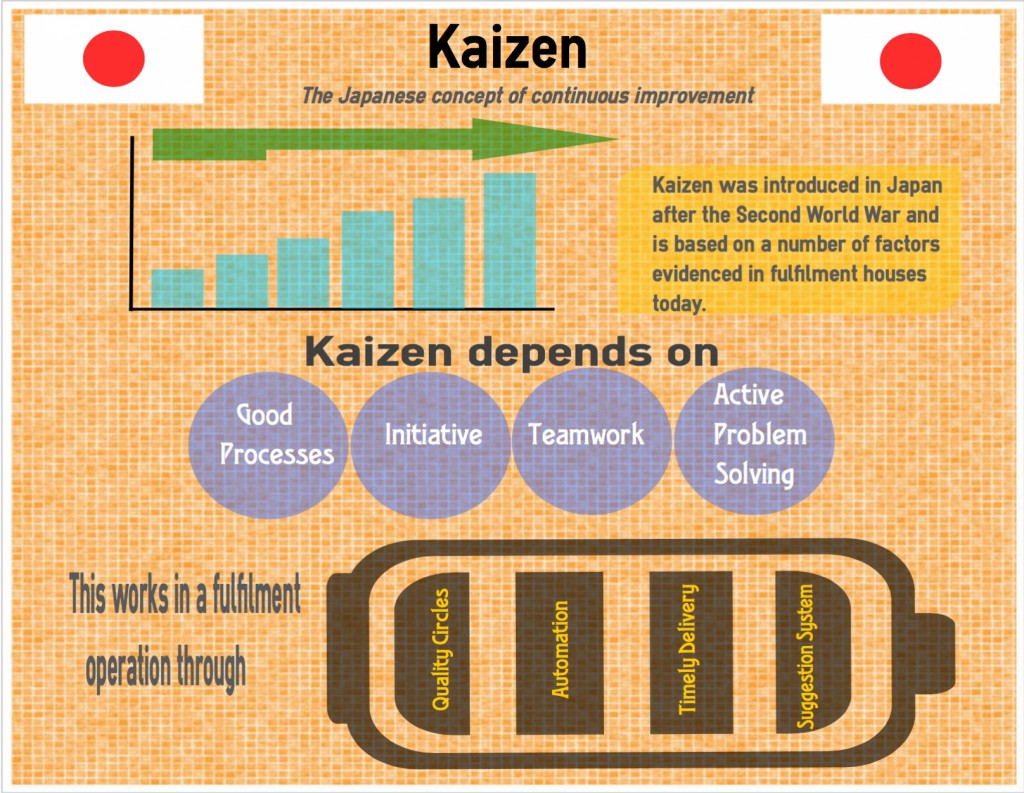
Fulfilment is not just defined as the process of receiving an order for a product and making the necessary preparations to get that order ready for delivery to the customer. There is a great deal going on in the middle of that statement: picking the product from the warehouse shelf; packing it into a suitable box to ensure that it arrives intact and undamaged; printing out a delivery label with name, full address and delivery instructions and company sorting code. All of this goes on before the delivery driver handles the package and ultimately hands it over to the customer.
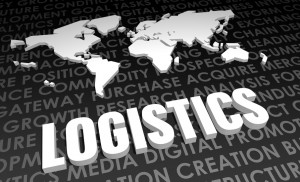
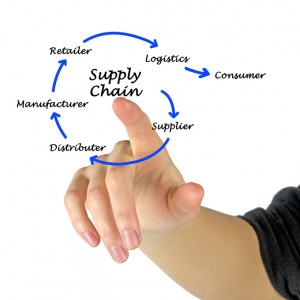
Machine to machine data flow (M2M), once called embedded computing
and now ‘the internet of things’ (IoT) is gaining ever larger shares of
the market.

The order fulfilment and e-commerce sector caters to new market participants more than almost any other, so we get a lot of questions about how fulfilment and e-fulfilment actually works. We have gotten a lot of questions lately about minimum order volumes, fees, and storage levels and how they work in the third party fulfilment market, and I will try to answer some of those today.
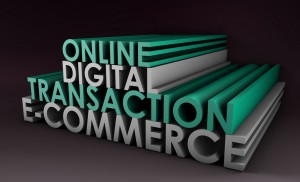
Ecommerce is changing what shopping means to people all around the world, but unfortunately it is also changing the way a small but growing minority of customers try to steal merchandise. Smaller e-commerce sellers in particular may be vulnerable to this, and should work closely with their logistics partners to prevent it.

Omni-channel or multi-channel fulfilment has significantly become the standard for retail providers, manufacturers and merchants to fulfill a broad wealth of different shipments. For that reason, operations now have to be more versatile and efficient to ensure the increasing range of order types and sizes are fulfilled, by showcasing order fulfilment processes with highly intelligent automation of the process.

Every business, or professional seller, will scrutinize their
incomings and outgoings to create a greater profit margin. High profits
with low expenditures are what keep a business productive and running
well, so business owners explore every avenue where they could cut
costs. This is apparent with packaging for items which are to be shipped;
by saving on packaging there will be a smaller outlay with the same
return on product price. You can do this by choosing your packaging
wisely, with much research and thought and looking into things such as:
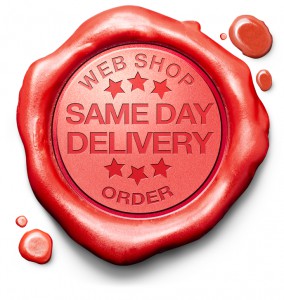
The e-commerce market is expanding rapidly in the UK (as in the rest of the world), and online customers are demanding express delivery much more often that has previously been the case.

Private courier companies have grown almost exponentially recently, and the parcel boom is directly tied to the number of e-tail and e-commerce businesses now operating in the UK.
In fact, 2013 saw 1.83 billion packages sent via courier from the UK
(and most delivered within the UK). There are just under 64,000,000
people in the UK, and that means that every man, woman and child in the
UK got 29 packages last year on average. 2014 is set to be an even
bigger year for ecommerce, seeing more than 2 billion packages, and more
than £7 billion worth of business to the courier industry.

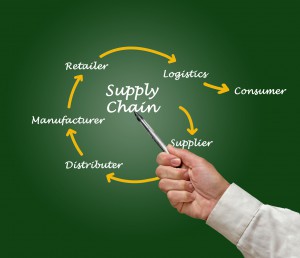
3PLs (third party logistics partners) have been a vital part of the supply chain for years, but the role they play in the supply chain continues to shift as economic conditions change. They now handle everything from raw materials to finished products, packaging, and order fulfilment. Experts tell us that the evolving business models of these 3PLs are a major force behind the growth expected for the consumer products industry in coming years.

E-commerce can be a very rewarding, efficient way to do business, but you have to organise properly if you want to get ahead. Most ‘e-tailers’ or ecommerce sellers prefer to begin with the help of an experienced warehousing, distribution and fulfilment partner who can handle the whole ‘back end’ of the operation, while the merchant focuses on business and sales, maintaining the website, and any other sales channels that they have developed.
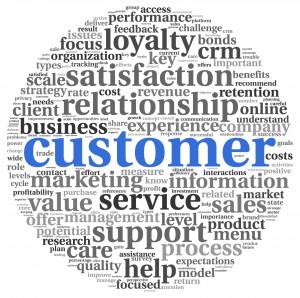
Customer experience is your number one priority as an ecommerce
seller. You have a lot of competition, and your customers can probably
get essentially the same product from quite a few other sellers. Once
they have spent money with you, they are more likely to go through you
again, but only if they receive the level of customer service they
demand.
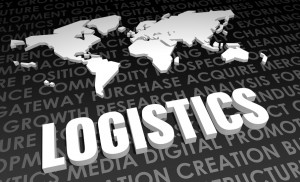
Time is your most valuable commodity. It is just about the only thing you cannot buy. How you spend your time determines your productivity and, ultimately, your business’ profitability.

Small online businesses and e-commerce start-ups have their own unique set of needs in terms of order fulfilment. Order volume may be very low for a time. It will almost certainly be inconsistent, at least at first. Small concerns cannot handle high setup costs, large monthly retainers or fees, or minimum order requirements. It just isn’t practical at that scale.


Whilst choosing the right fulfilment, distribution, and supply chain management partner may be the most important step to success as an e-tailer, there are quite a few things you can do to make life in e-commerce easier on your end as well.
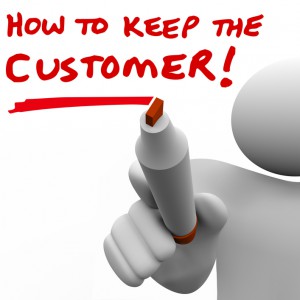



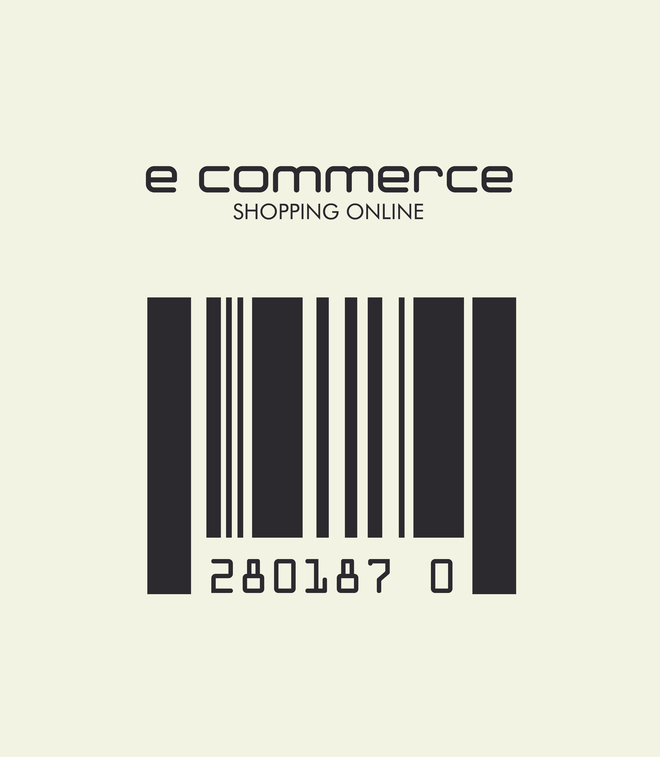
SMI (Slow Moving Inventory) is, of course, a relative term, and one
business’ SMI can move a lot faster than another’s A list. Building a
definition specific to your operation is the key to dealing with SMI
appropriately.
This is a particular concern for ecommerce retailers, as many of them use e-fulfilment services and may not be aware of the speed some of their SKUs move.
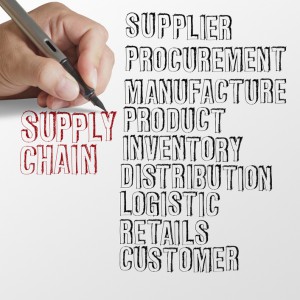
We’ve all heard about omni-channel marketing (wasn’t it just
multi-channel last month?), and how it is supposed to be the next big
thing. Most of us have decided that this time it’s not all hype, and we
should brace ourselves for the inevitable changes in the industry.
That is exactly the wrong kind of thinking. When a big change comes to any sector, there are three types of responses.

Not long ago, e-fulfilment was exclusive to retail operations. Now, though, a number of B2B and wholesale businesses are edging into the ecommerce fulfilment market. Historically, B2B operations of any kind have not been as focused on good customer experience as retail (or etail) operations, and fulfilment was seen as unimportant to the customer experience, unless and until something goes wrong.
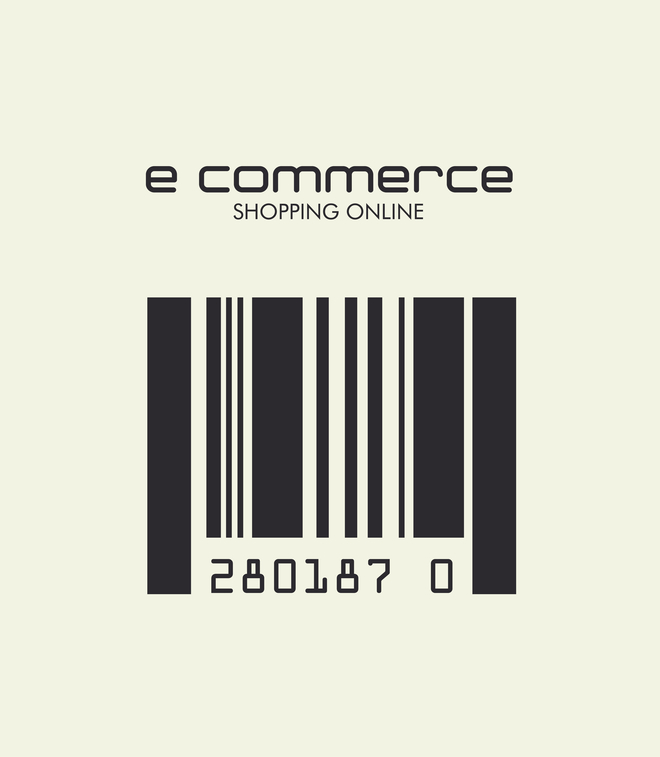
Early point of sale (POS) management used to simply be a case of entering a few numbers into an oversized calculator, waiting for the ping! and
making sure you handed the customer the right change. Nowadays,
customers find the sight of a traditional cash register an antiquated
quirk; a relic from the Museum of Retail Experiences.
When POS systems that used barcodes and scanners were introduced to
shop fronts across the retail industry, they quickly became an
established tool for automatically recording sales and stock levels, as
well as customer loyalty schemes and discounts. As retail sales grew, so
did the need for bigger and better POS management software.

Lawrence (real name withheld, he’s not ready for the kind of instant
fame that comes from being mentioned on our blog) runs a custom clothing
silk-screening and printing business.
A few years ago Lawrence discovered the internet in a big way, and
customers from all over England have discovered him. The problem is,
Lawrence wasn’t really ready to expand as much as he has, recently. The
move from doing business on a walk-in basis from his shop to printing
and shipping hundreds of garments a week trough eBay and his own website
has led to 12 hour days and a shop, and apartment, completely full of
inventory.
“I couldn’t even have friends over – my outbound orders were piled up on my couch.â€

It takes a lot of trust to let an outside company manage and perform some of your most vital business functions. Fulfilment is one of the most vital points in your logistics chain. Getting it right can make things very easy for you, but choosing the wrong partner could put the nails in your coffin.

As order fulfilment is one of the most important parts of any
business, it is essential that it’s done properly, which often means
investing a lot of money into setting up an efficient supply chain,
particularly if you’re just starting out.
If you’ve chosen to partner up with a fulfilment centre then you
won’t have to worry about the big decisions regarding your order
fulfilment – the professionals will take care of all that and it will
usually cost less than if you were taking it all on yourself.
But whether you’re outsourcing all or just part of your fulfilment needs, it’s still possible to lower your overheads even further with a few simple changes on your end:

When helping an e-fulfilment client put their house in order, some of the most frequent problems are with SKUs. All too often, the merchant has only a handful of inflexible SKUs, or an unmanageable array of to-small units. A good rule of thumb is that you should have fewer SKUs than the number of orders you despatch each month, but this can vary greatly by industry and product type.

When it comes to order fulfilment, it’s no surprise you want the best service available. A successful fulfilment company equals
a successful supply chain and there are many companies out there
promising the world, especially when it comes to the final part of the
process: distribution.
Some fulfilment companies split their courier services between third
party distributors, while others manage distribution in-house. But how
can a fulfilment company with an on-site courier service improve the
overall effectiveness of your supply chain?

This year is set to be busy for the logistics industry and as your company grows, you’ll need more time to invest in other areas of your business. Outsourcing your fulfilment to a specialist e-commerce or order fulfilment service can take away the stress of delivering products and free up your time to expand your business.

A successful fulfilment service means satisfied customers. From the moment they add an item to their shopping basket to the point they unwrap their product, the whole process counts. So we’ve outlined three of the most essential elements of order fulfilment to ensure a successful service.

A study of major world industrial markets by Jones Lang LaSalle shows
that on average, there have been four consecutive years of industrial
growth. 2013 represents a 5 year high of world industrial output, and
all indicators predict further expansion in 2014. As a result, warehouse
space utilisation has been growing as well, and distribution and
fulfilment houses have been expanding.
Expansion in 2014 so far has been driven by growing demand for ecommerce fulfilment
and the resulting need for large amounts of sophisticated warehouse
space. As a result, 2014 is set to be ‘the year of e-fulfilment’. The
coming year should see a growing demand for distribution centres with a
robust e-fulfilment infrastructure near large population centres.
However, some supply chain managers are bucking the trend. Smaller,
more specialised warehousing space is in high demand amongst very
responsive, agile shippers. The key feature for such space seems to be
that the space be accessible to fluid distribution channels.

When a customer has a complaint, where do they turn? In a bricks and
mortar store it’s normally straight back to the counter or to a
designated customer service till. If that’s not possible, a customer can
telephone a company’s customer care line, where staff are trained in
the art of customer response handling.
Large global corporate companies often invest heavily in their
customer response handling as this is the point where a customer could
be lost forever. Small to mid-sized companies might not have the
financial resources to dedicate to customer response handling and so
there is added pressure to get it right first time.

Starting your own business is an exhilarating feeling. You’ve taken a
single idea and turned it into a reality, whether it’s selling unique
handmade products from home or discovering a gap in the market that
desperately needed to be filled.
When that business is up and running, you’ll no doubt be involved in
every single part of its day-to-day operations, micro-managing every
little detail to make sure things run as smoothly as possible,
especially where order fulfilment—actually getting the product to your
customers—is concerned.
Order fulfilment tends to be one of the most expensive parts of any business, but it needn’t be.
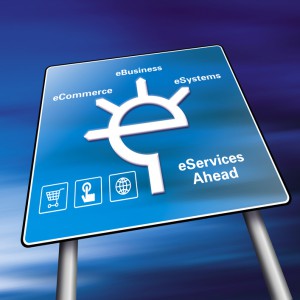
With e-commerce quickly taking over the high street as the world’s
preferred method of retail therapy, there’s never been a better time for
online businesses to reach wider audiences and strengthen their
customer base.
However, if you’re a retailer who established their brand on the
e-commerce scene a long time ago, but find yourself losing customers
instead of gaining them, you need to re-evaluate your business model and
find the causes behind the slump.
There will always be fluctuations in sales during certain times of
the year, whether you are purely an online retailer, a bricks and mortar
store, or a combination of the two – but a downward trajectory can mean
that something is amiss.
Everything might seem perfectly fine on the surface: your website is
attracting plenty of traffic and your online shop front is appealing. In
any business, this is the customer facing part of your brand, a
reflection of both your company and the management behind it.
Modern customers expect more from online commercial businesses –
fast, efficient delivery and products that arrive in excellent
condition.
But behind the scenes there could be a very different story going on,
particularly when it comes to your fulfilment services. If you handle
all your own fulfilment in-house, there is added pressure to maintain an
effective supply chain as well as keeping up with all the other aspects
of running a company.
If you outsource to a poorly managed or in-experienced fulfilment
house that provides your customers with shoddy customer service, poor
delivery and unnecessary costs, your brand is being negatively affected
without you even realising.
Promising your customers the best is one thing, but if you’re
struggling to keep up with demand on your own, you should seriously
think about enlisting the help of a professional and experienced fulfilment company, otherwise you’ll be hit with bad customer reviews and requests for refunds.
If you want to build your customer base back up to the same levels
you enjoyed when you were at your peak, then providing exceptional
e-fulfilment is one of the best ways to go about it.

Finding the right fulfilment partner can save you time and allow you to focus on the core aspects of your business. It allows you to grow your business without the expense of upgrading or expanding your facilities. Because a fulfilment company will do a high volume of orders, they can take advantage of the economy of scale to reduce your overall costs. They are also flexible enough to adapt to seasonal order fluctuations, and to add new lines easily. They also have the ability to become warehousing and fulfilment experts. This is Fairway Fulfilment & Logistics core business, and we have become very good at it. In the end, you’ll benefit from more efficient operations and happier customers.

Running a pick and pack service is all about ensuring the fulfilment of goods and products. On the surface, a successful pick and pack company is organised, reliable and timely. However, a lot of effort goes in behind the scenes of a successful pick and pack service and very often it’s the attention to detail that sets one service provider apart from another.
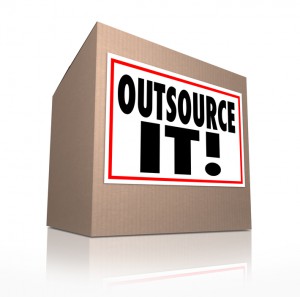
For many industries, 2014 is shaping up to be a busy year. Planning for an increase in activity will ensure that your order fulfilment service runs like clockwork and is able to meet demand. Here are our top tips to ensure your order fulfilment service operates smoothly.
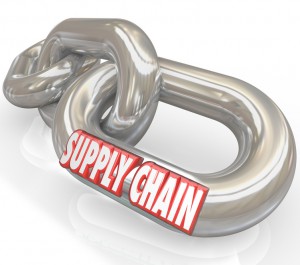
Supply chain collaboration can be beneficial for every company
involved. Companies that work together to offer supply chain solutions
often see dramatic reductions in fulfilment time, inventories and costs,
as well as seeing improvements in customer satisfaction and service
levels.
Focusing on Strengths
Companies who work collaboratively often do so in the wrong way,
using collaboration as a means of filling voids in their own individual
capabilities. The most successful providers of supply chain solutions
focus on strengths and use them to their advantage rather than
compensating for weaknesses. By identifying what each company in the
supply chain does well, collaboration becomes easier and more effective
for everyone involved.
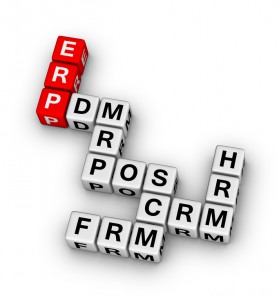
If you’re struggling to use shop-ready websites that offer limited
control, an effective POS management system can radically improve the
way you run the ecommerce side of your business.

One of the best parts about being the owner of a small business is
that you’re the boss – it’s you who gets to make the rules and oversee
everything, including one of the most important elements: order fulfilment.
If you’re the proud owner of a small business, then you’ll already
know the value of maintaining a smooth fulfilment operation, and will
have probably noticed the hundreds of companies trying to get your
attention by promising the best fulfilment service possible.
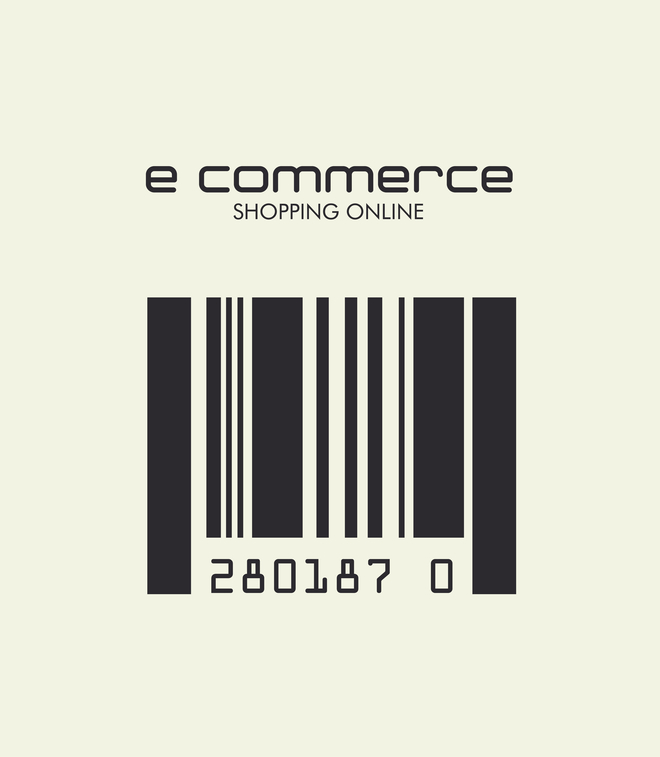

Love is in the air and so are sales of premium red roses, luxury
heart shaped chocolate boxes and a number of other Valentines Day
products. The majority of these orders will be purchased online and
delivered straight to the intended recipient, with no direct contact
between the customer who purchased the item and the product itself.
With big calendar events like Valentine’s Day, customers like to show
that they’ve put a lot of effort into their gifts. With a gap between
the buyer and the product, fulfilment companies can provide those little
extra touches using professional hand finishing and enclosing teams.
This is also a very lucrative part of seasonal fulfilment as you can
charge a small fee for professional gift wrapping and customers are more
than happy to pay for the service.

Supply chain management encompasses every part of the flow of goods from point A to point B, including sourcing raw materials, liaising with manufacturers and overseeing the complex chain of networks that make up the global supply chain.

Ecommerce is rapidly becoming the number one way to sell products, cutting out the need for costly ‘shop fronts’ and all the expenses that come with them.
When you start your search for the right fulfilment house to cover
your ecommerce business, the first question on your lips is probably
going to be “how much will it cost me?â€
Every fulfilment company will be different; most will offer a basic
ecommerce fulfilment service that will cover all the essentials
(distribution, pick and packing, handling etc) but there will be slight
differences depending on the size of the company, their experience and
other details.
Below is a brief guide to some of the service fees that you are likely to find on your fulfilment bill:

If you’re still feeling a little shell shocked after the run up to Christmas 2013 then now is the time to take a step back and reassess the state of your fulfilment house. With most of the post-Christmas January sales out of the way, it is the perfect time to fix any problems that occurred during or just after the Christmas rush.
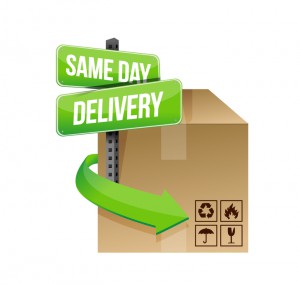
Last week we looked at Network infrastructure strategies that support
same day delivery. This week we look at ways to manage personnel
towards the same goal.

There are three main types of transportation in the fulfilment
industry that will get your goods where they need to go, or enable them
to be imported from other countries: vehicle, shipping and air freight.
Although transporting goods via shipping is arguably the most popular
way to move goods internationally, and road vehicles preferred where
local delivery is concerned, air freight has distinct advantages in the
overall speed of international delivery, as well as short haul local
flights that cover large distances in a matter of hours.
Fulfilment houses that have been strategically placed next to major
airports are often sold to clients on their ability to transport goods
faster due to the proximity of air freight services.

Unrivalled online retailer Amazon.com recently obtained a patent for “anticipatory shipping†and announced its plans to launch a system that, if successful, would dramatically shorten its customer order fulfilment.

Today, I’d like to share with you a case study of a young woman who would not be where she is today without a quality fulfilment partner for her home business. Her name has been changed for the sake of privacy, but let’s call her Lily.
She felt like she was missing out on her children’s lives at her 9 to
5, so she left her job in the banking industry to sell toys from home.
At the time, her daughter was only five, and her love for both
traditional and educational games inspired her mum.
Lily started a small online store to sell high quality children’s
games, at first just to her friends and neighbours, but eventually to a
growing clientele. “I always used my daughter to choose the products,
and my customers were always happy with her choices.â€
“I only wanted to have the freedom to pick my daughter up from school. I never knew the business could become so successful.â€
Several years on, Lily has launched her toy shop on a major online
facility’s site, and she needed a dedicated fulfilment house to handle
the much greater volume of business she was suddenly doing.
“For the first time in what feels like years, I have time for the
things that matter to me, and to grow my business as well. I’d never go
back to the old way of doing things.â€
With her fulfilment partner handling all the warehousing and order
processing, Lily’s business was finally not crowding her out of her own
home. As a toy store, she did fully half her sales leading up to
Christmas. “By November, we could barely move for the stock we had to
keep in the officeâ€. Better still, the increased capacity lets her make
enough sales to improve her lifestyle substantially. Lily says that her
success is nothing compared to the joy she has being a full time mum on a
full time businesswoman’s salary.
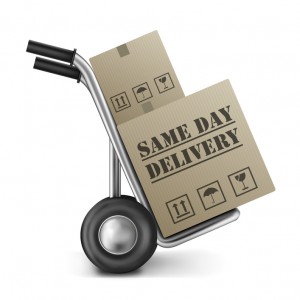
Last week we looked at ways to manage your inventory to achieve the
current holy grail of fulfilment, same day delivery. This week we will
examine network infrastructure, and how you can get everything where it
needs to go in time.
There are two basic strategies you can follow, depending on the 3V
analysis in the last installment. If you have a high 3V product, you can
use a single warehouse model. This makes your logistics and supply
chain simpler than the multiple-warehouse option, but requires you to
commit to somewhat expensive freight options to your more distant
customers. This model only really works well if your customers are
clustered in major cities which are in the same general area. Again,
luckily for England the bulk of most nationwide business’ customers are
in the South, or close to it. The freight expense will generally be
lower than the cost of the extra warehouses or fulfilment partners, as well.
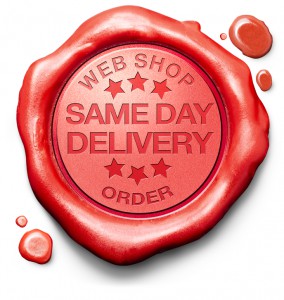
With large international companies like Amazon experimenting with same day delivery, merchants and fulfilment companies need to cooperate to compete.
First things first: to get a product delivered on the same day it is
ordered, the product has to be in stock and within an 8 hour journey of
its destination. England is in a better position than may countries, as
even a good bit of Scotland is an 8 hour lorry ride from the London, and
fully 1/3 of the population is clustered in the Southeast alone.
Companies pioneering this strategy in the US or mainland Europe have to
stock a lot of extra inventory along a network of warehouses, making it
much more expensive.

In the industry of order fulfilment services, response handling is the term for any reply or action taken when a customer responds to materials provided by your business. Fulfilment houses often provide this as an extra support service alongside standard fulfilment jobs such as pick and pack, storage and distribution.

If you’ve not already made the jump from the traditional high street
retail shops to online ecommerce, then you’re already trailing behind
the vast number of established retailers and new start-ups that are
benefitting from this change.
Ecommerce is growing every year as more and more people change their
shopping habits, buying everything from luxury goods to everyday
essentials online.
Technology has played a big part in the success of ecommerce – the
very nature of its platform, the ever expanding internet, has given
retailers the freedom and flexibility to maximise their profits by
building on their brand in a completely virtual setting.

In the fulfilment industry,
picking and packing items before they are distributed to customers is a
large and often complex procedure. This is especially true when certain
products or materials can’t be fully packaged by automated machinery
and require hand finishing and enclosing.
Though a particular product might need a little more hands on care
before being distributed to customers, in the case of marketing, hand finishing can actually help your brand reach a greater number of people.
Not only that, but with such massive volumes of different products
requiring hand finishing and enclosing every day, it’s a vital part of
the fulfilment industry and one that can effectively boost sales, brand image and positive customer feedback.
With a combination of automatic machinery and trained hand finishing
staff, orders reaching into the thousands can be completed and
distributed within a matter of days. Some examples of how this might
benefit your business include:
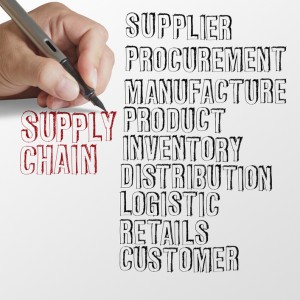
The point of sale, or POS, is the moment your
customer completes their purchase of a product. In a bricks-and-mortar
store, this would be at the till. Online, it’s would be the point where
the customer clicks on the ‘confirm order’ button.
Consumers are switching to online purchases for almost every
essential and non-essential purchases in their lives; they can do the
grocery shopping from the comfort of their own homes, order that
complete DVD box set they’ve been after for months, or even finish all
their Christmas shopping on time and in one sitting.

What is it that first attracts new clients to a fulfilment house? A recommendation via word of mouth from another business owner? A snazzy website loaded with pictures, testimonials and blogs? Or perhaps a bit of both? Although recommendations and a professional appearance are important, a new client will sift through the available fulfilment houses and ultimately choose the one that provides the order fulfilment services they need.

As we get stuck into January and deal with the increasingly unstable
weather sweeping the nation, many personal New Year’s resolutions will
have been made, and some even kept, with plenty more that didn’t quite
make it past the third day.
In the fulfilment industry, the New Year can be a
great time to take a fresh look at the industry as a whole and stir up
new ideas and solutions for a rapidly changing environment.
For business owners, it could potentially be the start of their
company’s expansion into new territories, grabbing the attention of new
customers and maintaining their relationship with regulars.
For 2014, instead of a personal one, why not make a business
resolution that you can stick too, like aiming to make this the year
that your get your e-commerce up and running, or creating and implementing an effective marketing campaign to encourage new customers?
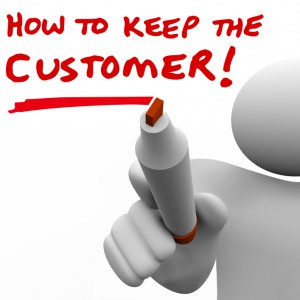
Rewarding consumer loyalty is one of the simplest
and most effective ways to imprint your brand on the minds of your
customers. They often feel that their loyalty is appreciated and are more likely to purchase something from you in the future.
From collecting points that customers can update and manage online to
free gifts or bespoke promotional merchandising, having a rewards and
loyalty scheme in place can massively increase brand awareness and
encourage customer loyalty.
Some order fulfilment companies
deal directly in the procurement and delivery of non-monetary rewards
and loyalty gifts, while others may treat your loyalty stock as simply
another product to be distributed.

Hand finishing and enclosing is a fairly self explanatory process in the fulfilment industry,
even if it isn’t always a simple operation. Bespoke packaging for
physical products or marketing campaigns that are too delicate or
complicated to be machine packaged are finished off by hand and
delivered directly to your customers.
It is a fantastic way to reach your customer base and encourage general interest. While hand finishing and enclosing
is used mainly for distributing promotional material to your end users,
it can also provide unique and even fun extras that will really
surprise your customers.
Promotional materials such as personalised letters or vouchers for
money off future purchases targeted directly at one time or regular
customers can in fact push sales – and profits – through the roof, while
an effective marketing campaign targeted at new customers (think free
samples) can increase brand awareness.

One of the biggest customer complaints regarding deliveries of large
items is waiting in all day for delivery. There are cases where the item
in question fails to show up at the specified time or day. This can
infuriate customers who will have no doubt had to rearrange their
schedules in order to receive the items.
All over the internet there are comments and angry customer reviews
about having to take a half or sometimes even the whole day off work,
sending out ripples of disruption into other areas of the customer’s
life.
Recently there have been more and more companies, particularly from
some of the biggest names like The Royal Mail, who have extended their
delivery hours into the evening, from 6pm onwards, in order to cater for
people who work during the day. Fairway Fulfilment & Logistics can assist your business with ensuring customers receive their goods on time, call us today on 01753 588469 for more information.